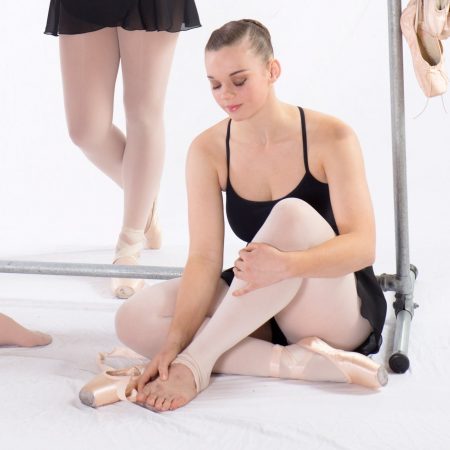Bunions or hallux valgus
Bunions (sometimes referred to as Hallux abducto valgus) are enlargements of the inner portion of the metatarsophalangeal (MTP) joint at the base of your big toe.
The foot bunion is the result of changes that occur in the framework of the bones at the front of your foot. Instead of pointing straight ahead, your big toe begins to lean into your second toe, throwing the bones out of alignment.
En Pointe Orthotics support the toes improving the alignment as well as protecting the bunion area from added pressure.
A Partial En Pointe Orthotic can also be an alternative in this case and can be discussed with your En Pointe Orthotic Fitter.
Blisters
Despite wearing shoes designed for this form of dance, dancing en pointe still may cause friction between the toes and the shoes themselves which can cause chaffing and blistering. With the perfect fit of the custom-made EPO, dancer’s claim that they no longer get blisters in their toes when wearing EPO’s.
Stress Fractures
Clients that claim to have suffered from stress fractures due to pointe work have said that they no longer suffered these fractures since wearing EPO’s
Toe Nail Damage
If you are a ballet dancer en pointe, issues involving the toes are probably nothing new. Considering that your entire body weight is balanced on your toes while dancing, it’s no wonder that your feet and toes look like they’ve taken a beating. Dancing on your toes day after day puts tremendous stress on them, and that stress is sometimes evident by the appearance of the toenails. Because of the pressure placed on the toenails while en pointe, some dancers develop bruising of the nails. Bruised toenails can cause intense pain (not to mention an unsightly appearance) for dancers. When the bruising is caused by dancing en pointe, it is usually the result of repeated pressure to your nail. Pressure strong enough to cause bleeding. Tiny blood clots form under the nail, causing pain to the dancer as the toenail is lifted away from the nail bed. In extreme cases, a portion or the whole nail can eventually be lost.
If your feet are weak, you may also be compensating by knuckling your toes which also causes too much pressure on your nails.
En Pointe Orthotics are made to fit like a glove to the exact contours of your toes, down to your toe prints, grooves and crevices. This precision custom pointe pouch has been shown to eliminate any damage to toe nails in all reports from dancers in EPO’s when worn correctly and nails kept trimmed.
In all trials and client feedback, clients have reported that they have not sustained any occurrences of bruising, fungal infection, ingrown, or loss of toenails since wearing EPO’s


